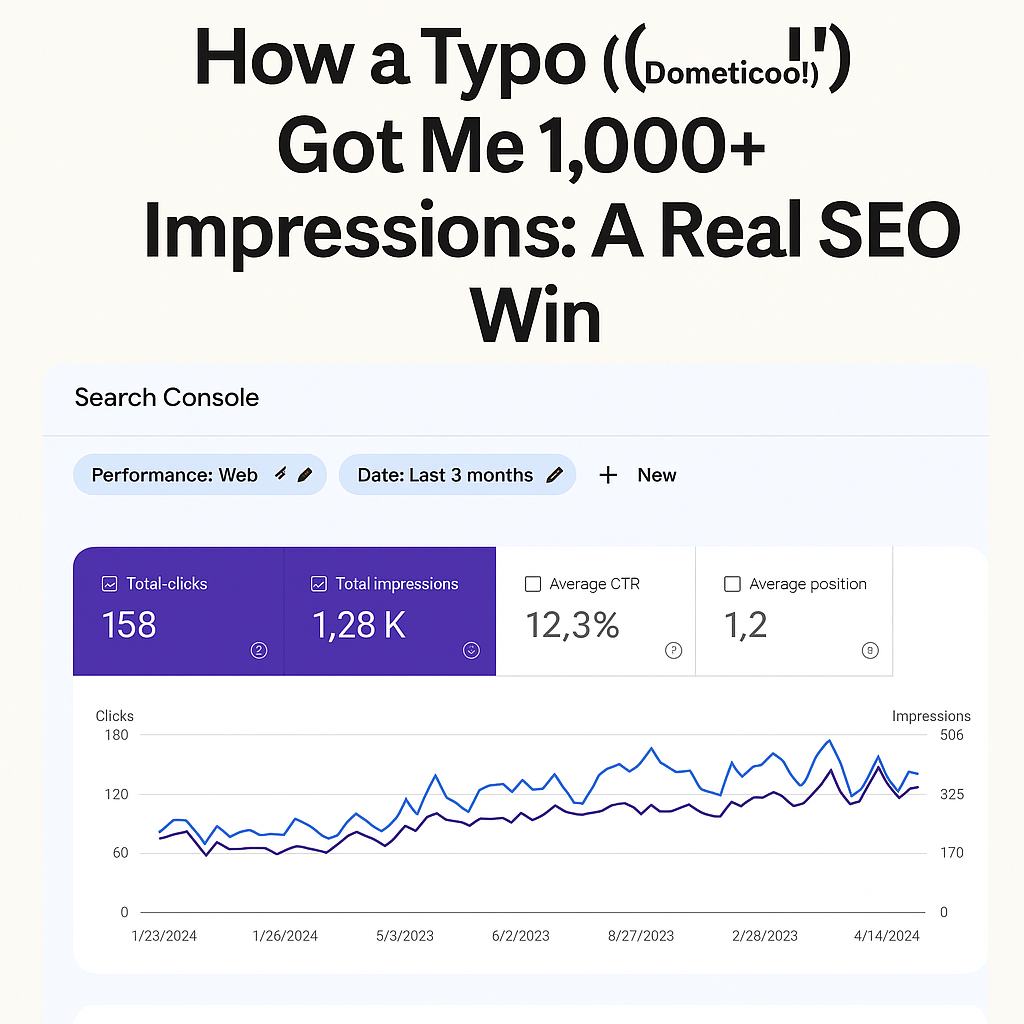How a Typo (“Dometicool”) Got Me Hundreds of Clicks
When I first wrote a blog post about the 2025 Apprentice winner and his air-con business 'Domesticool', I didn’t think much of it. Except, I misspelt the company name once — as 'Dometicool'. And that single typo ended up driving hundreds of clicks and thousands of impressions from people making the same mistake. What started as a minor error turned into an SEO case study worth sharing.
Typos are traffic
We tend to optimise for perfect spelling and polished queries, but real users aren’t perfect. They search in a rush, on mobiles, or by memory. And when a brand name isn’t super intuitive — like Domesticool — people will get it wrong. I just happened to get it wrong too, and Google noticed.
Within a few days, 'Dometicool' started showing in my Google Search Console as an impression-heavy query. Clicks followed. It ranked fast because competition was basically zero — nobody was targeting the misspelling, and Google still considered my page relevant to the topic.
What this tells us about SEO
This isn’t just about one typo. It’s about long-tail search behaviour. People search in weird ways. They type brand names wrong. They describe things imprecisely. And all of those messy queries are opportunities if your content matches the intent, even loosely.
In this case, 'Dometicool' wasn’t a keyword I planned to rank for — but now it’s a magnet. And it’s laser-targeted. Anyone typing that is either trying to find the Apprentice winner’s business, or looking for commentary about it. I delivered that by accident — but you can do it on purpose.
How to use this strategy (on purpose)
1. Think like a human, not a search engine. What typos are common for your brand, product, or competitor names? Tools like Google Suggest or AnswerThePublic can help.
2. Include common misspellings naturally. Don’t keyword stuff. Just mention them in passing, like: 'Not to be confused with Dometicool — it’s actually Domesticool.' That’s enough for Google to make the link.
3. Own the long tail. Go after low-volume, low-competition keywords. It’s not glamorous, but it stacks up. And the traffic tends to convert better because it’s specific.
TL;DR — One wrong letter. Big results.
If you're blogging, running SEO for a brand, or just trying to get found online — don’t overlook the messy side of search. Sometimes the biggest wins come from the smallest mistakes. 'Dometicool' wasn’t a fluke. It was a window into how people actually search. And I plan to leave the typo in.
.jpg)
